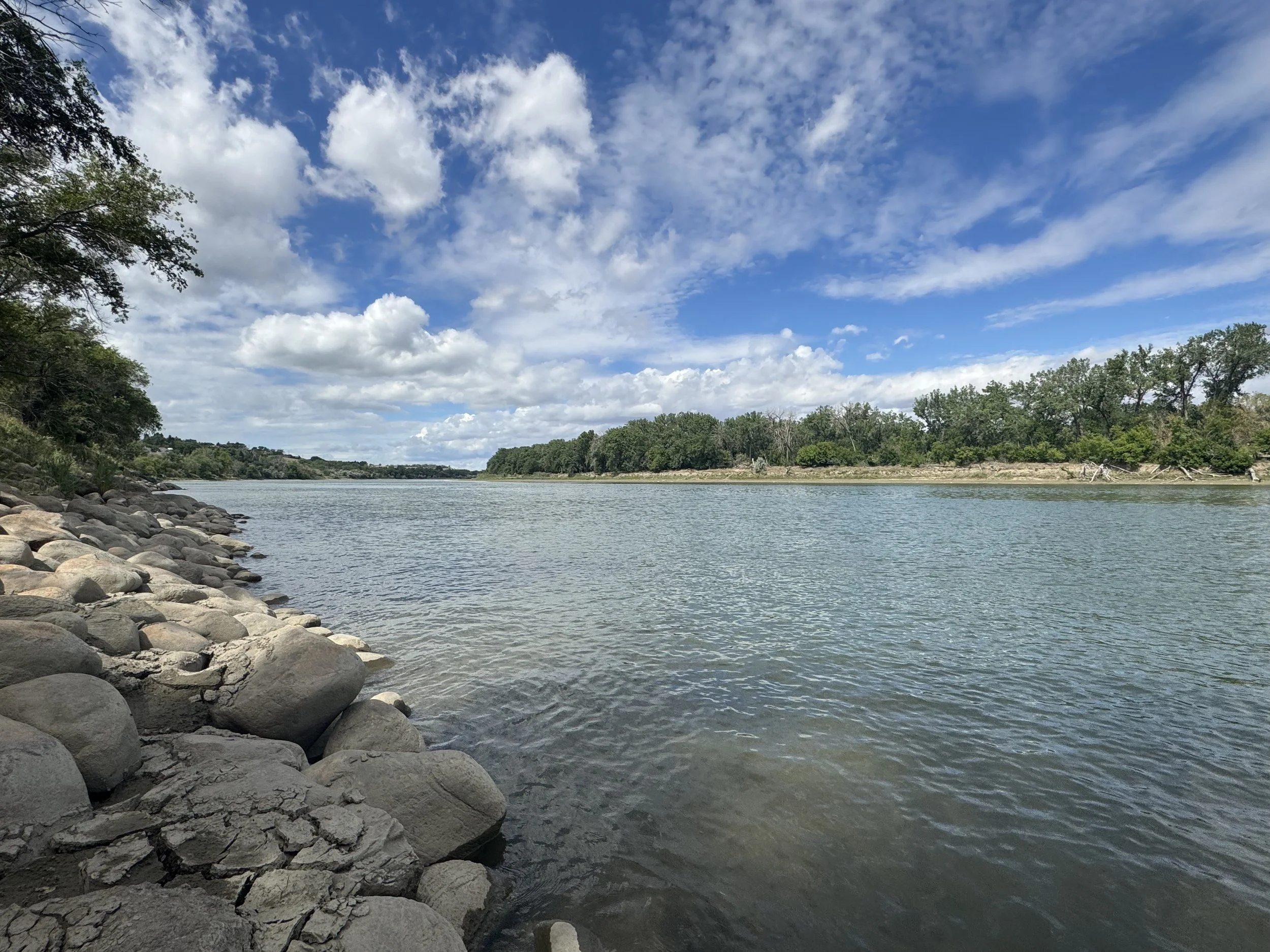River Report #11 - South Sask. River In Severe Drought
The South Saskatchewan River at Medicine Hat on Thursday. The river’s streamflow is currently below the bottom 10th percentile of average based on records collected since 1911. Alberta Environment has elevated the river’s status to Stage 3, severe drought. (Photo Alex McCuaig)
Following late June rains across southern Alberta the region’s rivers are once again feeling the pressures of low streamflows as the traditional dry season gets underway.
The South Saskatchewan River basin saw its hydrological drought status elevated to severe. It’s now at Stage 3 of the provincial five stage drought assessment gauge. The Oldman River basin has also been at that Stage 3 level since spring while the Bow River basin has been at Stage 2, moderate drought, for several weeks.
The precipitation that did fall over the June 21st weekend did see rating improvements of crop and pastures across the South Zone and scattered showers since the first day of summer have built on soil moisture levels. Cereal crops across the region have begun to head while pea and canola crops are flowering. First cut hay on is more than half completed on irrigated fields.
But the Oldman River basin and its namesake reservoir continue to struggle.
Water shortage advisories have been issued on the three contributing waterbodies to the Oldman Reservoir – Upper Oldman Crowsnest and Castle rivers. The reservoir itself has seen its levels drop in the past two weeks by five per cent.
Streamflows on the Oldman River at Lethbridge nearly fell below the instream objective of 20 cubic metres a second last week before rebounding and is now seeing levels fall once again.
The South Saskatchewan River at Medicine Hat is again reporting streamflows below its 25th percentile with conditions on Thursday seeing that number fall below the bottom 10th percentile. The South Saskatchewan at the Hat is also failing to meet water conservation objectives as is the Oldman at Lethbridge.
Reservoir storage levels in the St. Mary River Irrigation District are rated below normal capacity across the system. Chin is an exception rated above normal amongst the top three largest district irrigation reservoirs.
Eastern Irrigation District’s main water supply held at Lake Newell continues to be at normal seasonal levels while Bow River Irrigation Districts reservoirs are at above normal levels system wide.
Streamflows are anticipated to remain around 60 cubic metres a second on the South Saskatchewan at Medicine Hat with reductions from the Oldman at the forks with the Bow expected to be matched by the latter river.
Precipitation has been falling in various locations in southern Alberta on Thursday with conditions expected to clear Friday.
Widespread precipitation across southern Alberta is forecast starting on Sunday and into Monday. Isolated showers are also anticipated in some regions in the next seven days along with afternoon thunderstorms.
Hydrometric data from Environment Canada showing streamflows on the Oldman River at Lethbridge not having reached 100 cubic metres a second since July 2022. (Graphic courtesy of Environment Canada)
Statistics for the South Saskatchewan River at Medicine Hat for July 10
Upper quartile – 517 m³/s
Lower quartile –169 m³/s
July 10, 2024 – 62 m³/s
July 10, 2025 – 97 m³/s
Statistic for the Oldman River at Lethbridge for July 10
Upper quartile – 200 m³/s
Lower quartile – 37 m³/s
July 10, 2024 – 21 m³/s
July 10, 2025 – 27 m³/s
Statistics for the Bow River at Calgary for July 10
Upper quartile – 238 m³/s
Lower quartile – 124 m³/s
July 10, 2024 – 208 m³/s
July 10, 2025 – 118 m³/s
*Upper and lower quartile averages are based on data collected between 1911 and 2024.
Oldman Reservoir for July 10 level (metres above sea level)
Upper quartile – 1118.014 m
Lower quartile – 1117.173 m
July 10, 2024 – 1117.454 m
July 10, 2025 – 1108.522 m

